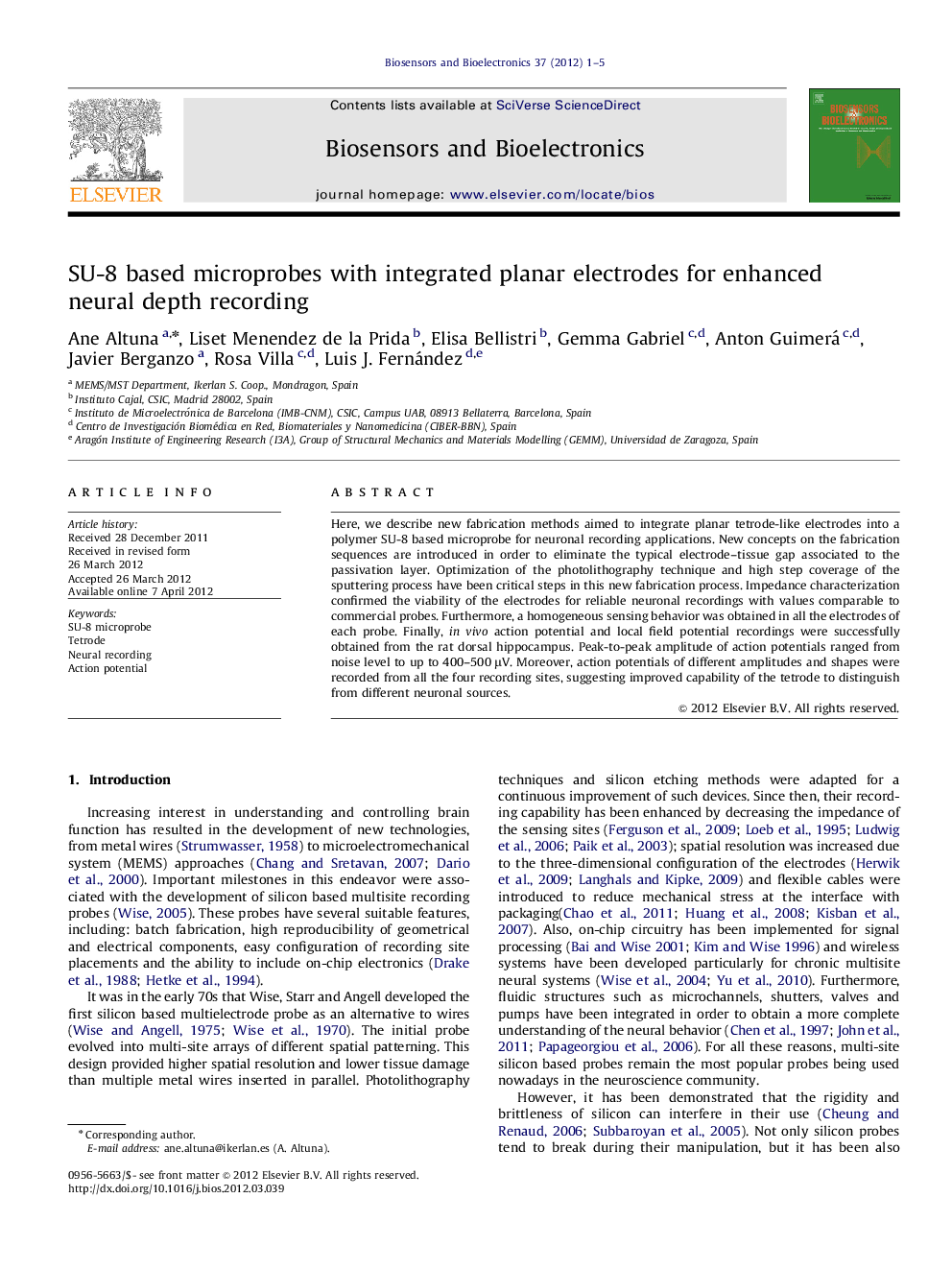| Article ID | Journal | Published Year | Pages | File Type |
|---|---|---|---|---|
| 867330 | Biosensors and Bioelectronics | 2012 | 5 Pages |
Here, we describe new fabrication methods aimed to integrate planar tetrode-like electrodes into a polymer SU-8 based microprobe for neuronal recording applications. New concepts on the fabrication sequences are introduced in order to eliminate the typical electrode–tissue gap associated to the passivation layer. Optimization of the photolithography technique and high step coverage of the sputtering process have been critical steps in this new fabrication process. Impedance characterization confirmed the viability of the electrodes for reliable neuronal recordings with values comparable to commercial probes. Furthermore, a homogeneous sensing behavior was obtained in all the electrodes of each probe. Finally, in vivo action potential and local field potential recordings were successfully obtained from the rat dorsal hippocampus. Peak-to-peak amplitude of action potentials ranged from noise level to up to 400–500 μV. Moreover, action potentials of different amplitudes and shapes were recorded from all the four recording sites, suggesting improved capability of the tetrode to distinguish from different neuronal sources.
► Electrodes at the SU-8 probe surface level have been fabricated. ► Different amplitude and shape of action potentials were distinguished. ► Peak-to-peak amplitude of action potentials ranged up to 400–500 μV.
